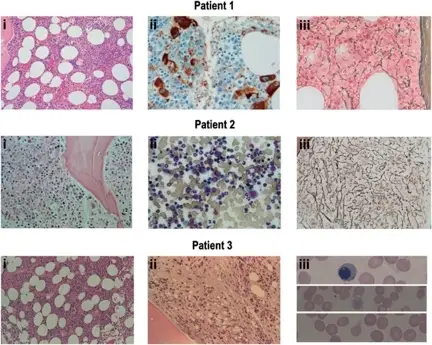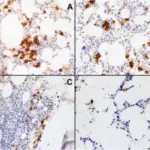Paroxysmal nocturnal hemoglobinuria is a disorder resulting from acquired mutations in phosphatidylinositol glycan A (PIGA).
What is the Pathology of Paroxysmal Nocturnal Hemoglobinuria?
The pathology of paroxysmal nocturnal hemoglobinuria is:
-Etiology: The cause of paroxysmal nocturnal hemoglobinuria is gene PIGA mutation.
-Genes involved: PIGA
-Pathogenesis: The sequence of events that lead to paroxysmal nocturnal hemoglobinuria result from somatic mutations occurring in pluripotent stem cells, with all its clonal progeny lacking in proteins attached to the cell membrane via GPI. Mutations in phosphatidylinositol glycan A (PIGA) vital for synthesizing the phospholipid glycosylphosphatidylinositol (GPI) anchor.
-Morphology: Rashes.
-Histology: Abnormal red blood cells.
How does Paroxysmal Nocturnal Hemoglobinuria Present?
Patients with paroxysmal nocturnal hemoglobinuria typically have no gender prevalence present at age range of childhood and adulthood. The symptoms, features, and clinical findings associated with paroxysmal nocturnal hemoglobinuria include esophageal spasms, raised painful red nodules in the skin, headache, and abdominal pain.
How is Paroxysmal Nocturnal Hemoglobinuria Diagnosed?
Paroxysmal nocturnal hemoglobinuria is diagnosed through laboratory studies- Flow cytometry to detect CD59, a glycoprotein, and CD55. Acidified serum lysis and Ham test, immunotyping, complement lysis sensitivity test, sucrose lysis test. Serum lactate dehydrogenase levels may also be useful.
How is Paroxysmal Nocturnal Hemoglobinuria Treated?
Paroxysmal nocturnal hemoglobinuria is treated through monoclonal antibodies therapy (eculizumab, ravulizumab), corticosteroids therapy, managing underlying causes, and bone marrow transplant.
What is the Prognosis of Paroxysmal Nocturnal Hemoglobinuria?
The prognosis of paroxysmal nocturnal hemoglobinuria is fair with proper management.



